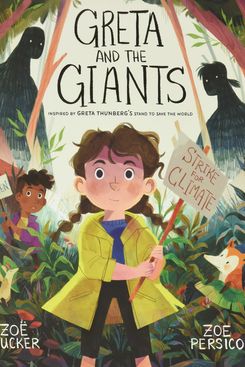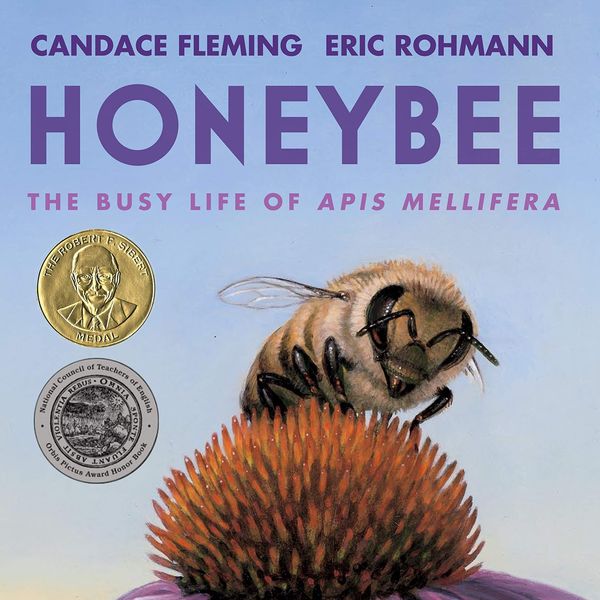
Back in 2017, writer and Strategist contributor Jen Doll put together a helpful list of 16 environmental education books to help turn kids into young environmentalists and “increase their sense of global connection and duty to the planet in myriad ways.” Almost four years later, the urgency to teach kids about the environment is just as relevant and perhaps even more pressing. So we’re doing it again for 2021, and this time, we’ve enlisted the expertise of six educators who specialize in the field of environmentalism. They are Rebeca Ames, director of development at City Growers; Isa Del Bello, director of education at Brooklyn Bridge Park Conservancy; Jennifer Bombardier, education manager at Lower East Side Ecology Center; Patricia Hulse, director of the Everett Children’s Adventure Garden at the New York Botanical Garden; Kate Fermoile, director of exhibitions at the Brooklyn Botanic Garden; and Shea Betts, senior librarian at the Brooklyn Public Library who coordinates its Climate Wednesdays series.
Like our other reading lists, we made sure to include books recommended by at least two of our experts, but we also included some honorable mentions that tie in to more specific topics of environmentalism — like honeybees, nature appreciation, and the changing of the seasons. And for parents who are still hesitant about where or how to start, Del Bello says, “A big piece is just starting and not to be afraid. In this area, it’s okay to be learning along with your children,” which is why many of the books she recommended are ones that she likes herself. “If a parent also enjoys that book, that’s something that they can not only talk to their kid about but that they don’t mind reading — or that they might even enjoy reading — more than once.”
Dr. Seuss’s The Lorax is often kids’ first introduction to environmentalism, so it’s little surprise that three of the experts recommended it — but it’s also worth mentioning that all three noted the backlash that some of Dr. Seuss’s books have been getting recently. Regardless of the controversy, Ames emphasized the importance of books that focus on “this idea that we can all persist together,” and she likes that The Lorax does just that. Plus, it does not shy away from talking about “the larger forces against having a safe and clean environment,” like industrialization. And Hulse and Fermoile agree, adding that kids love the whimsical characters and fantastical elements of this book.
While plenty of books about activism — both fiction and nonfiction — were brought up, We Are Water Protectors was mentioned by three of our six experts. Written by Carole Lindstrom, a member of the Turtle Mountain Band of Ojibwe, this book focuses on the environmental activism of Indigenous peoples, which is “something we must talk about since there were Indigenous stewards of this land long before us,” says Bombardier. Betts and Ames like that it’s highly engaging for kids because it’s written through the eyes of a young girl who’s a part of a protest that’s inspired by the Sioux Tribe’s protest at Standing Rock. “It shows that anyone can be proactive in protecting our resources,” says Ames.
Another book that tells the story of one child making a difference is The Curious Garden, by Peter Brown, which was recommended by two experts. “Seeing that kids can make changes in the world around them is important,” says Hulse, who likes that this book is based in an urban environment and empowers kids to make changes in their own backyards. It follows the journey of one boy who lives in a dreary, concrete city and discovers a green, abandoned railway — “not unlike the High Line,” Bombardier notes — and plants seeds that eventually grow into a lush green space. “This book is interesting for all kids, but I think especially for New York City kids,” says Bombardier, who reads this to kids while teaching them about gardening and green spaces.
Just as The Curious Garden is about urban renewal, so too is City Green by DyAnne DiSalvo-Ryan — another book recommended by two experts. Ames, who calls this “a classic” for environmental educators, says it’s on “everybody’s shelf” at City Growers and is one they keep in their camp library for children to read. The book is about a girl who lives in a city and sees a building turned into an empty lot. She then goes through the process of forming a community garden, “which includes petitioning, organizing, getting a permit to use the space,” says Bombardier. “It’s really valuable for kids to see that the community residents in their neighborhood can take action to make change.”
Honorable Mentions
Many of the experts brought up Greta Thunberg as someone kids could look to for inspiration, but one title that stood out for the younger set is Greta and the Giants. It’s a picture book by Zoë Tucker based on Thunberg’s story and told through a “fairy-tale format where there are these giants threatening her home,” says Del Bello. As the book progresses, the “giants” get more realistic and more human, illustrating the real threats that are at hand, but more importantly, according to Del Bello, “It’s really a story of heroes and a hero’s journey. It’s a story of how the power of one can affect many.”
Several of the experts also mentioned books that focus specifically on honeybees, but here are two standalone mentions worth calling out. Honeybee by Candace Fleming comes recommended by Del Bello, who says it has “a ton of information” and is “gorgeously illustrated,” making it “very visually engaging” for kids. “You don’t feel like you’re reading a boring science book,” she adds. “You want to keep turning the page and see what happens next. It’s a really engaging science book for people who aren’t science-y necessarily.”
Ames, who echoed the importance of honeybees, recommends The Thing About Bees for several reasons. Because it’s a picture storybook, it’s more approachable for younger kids from ages 3 to 7 years old than Honeybee; the illustrations are “really beautiful”; and it’s written and told by the perspective of a Black narrator, which Ames says “it’s really nice to see that representation in the beekeeping community and bee-loving community.” The story itself acknowledges that plenty of people are afraid of bees, but then “opens up to all the ways that bees are wonderful,” says Ames. “It’s about changing attitudes and changing it from fear to curiosity, and it does that really well.”
A necessity in learning about environmentalism is actually exploring and being out in the world, which is why many experts included books that center around nature appreciation. A book that’s approachable to kids everywhere and worth noting is The Hike by Alison Farrell. Ames recommended it because it’s “more about walking and observing nature that surrounds you as opposed to the part of hiking that’s climbing a rock or going through a stream,” which can easily be done in cities and suburbs, as well as in the woods. The book includes a “sketchbook” from the main characters who jot down the flora and fauna they see, “encouraging kids to identify plants and animals on walks,” says Ames. “You don’t need to be in a forest to find a flower and think about it and draw it.”
Tied in with appreciating nature is understanding phenology, the study of biological life cycles through the seasons. “With young kids all the way up through teens we emphasize teaching this,” says Hulse. “Because it’s only through knowing this that they’ll notice when things start to sprout early in the season or stay awake longer” and, in turn, be able to recognize the effects of climate change. For the really young kids, between ages 2 to 5 years old, she recommends this board-book series by Rusty Finch, which she taught during New York Botanical Garden’s virtual programming this past winter. While the kids loved the interactive pop-up book with lift-up flaps, “it was also very in tune with the rhythms of what kids could see in our garden,” like sprouting plants and hibernating animals. “That story of winter dormancy in a very simple way came alive for the kids,” she says.
The Strategist is designed to surface the most useful, expert recommendations for things to buy across the vast e-commerce landscape. Some of our latest conquests include the best acne treatments, rolling luggage, pillows for side sleepers, natural anxiety remedies, and bath towels. We update links when possible, but note that deals can expire and all prices are subject to change.
















